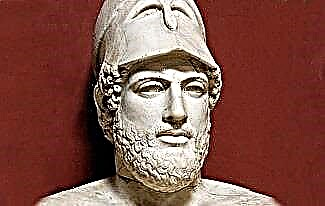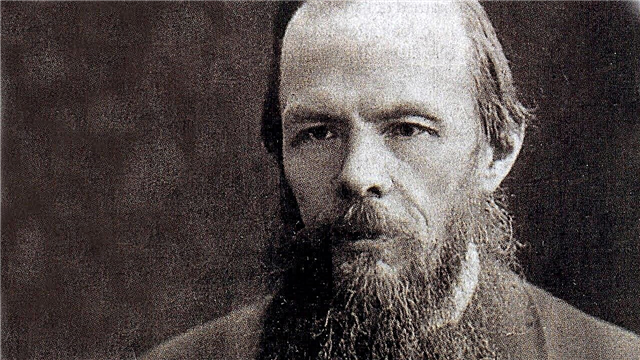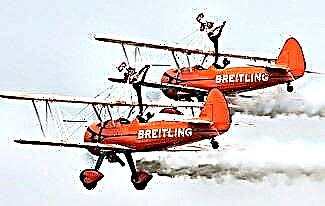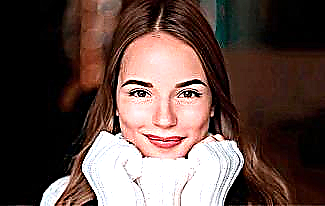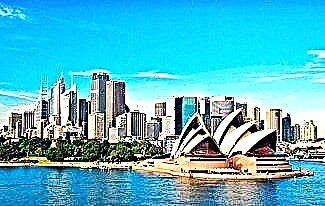The outstanding Russian painter Vasily Ivanovich Surikov (1848 - 1916) was a master of large-scale, carefully worked compositionally, canvases. His paintings "Boyarynya Morozova", "Stepan Razin", "The Conquest of Siberia by Yermak" are known to any person more or less familiar with painting.
Despite the classical style of painting, Surikov's painting is very peculiar. Any of his paintings can be viewed for hours, finding more and more colors and shades in the faces and figures of the characters. The plot of almost all of Surikov's paintings is based on contradictions, visible or hidden. In “The Morning of the Strelets' Execution”, the contradictions between Peter I and the Streltsy are visible to the naked eye, as in the painting “Boyarynya Morozova”. And the canvas "Menshikov in Berezovo" is worth thinking about - it depicts not only a family in a poor village house, but the family of the once all-powerful imperial favorite whose daughter, also depicted in the picture, could become the king's wife.
For some time Surikov belonged to the Itinerants, but his painting is strikingly different from the paintings of other Itinerants. He was always on his own, away from controversy and discussion. Therefore, he got a lot from the critics. To the artist's credit, he only laughed at the criticism, whoever it came from, and remained true to his manner and his convictions.

1. Vasily Surikov was born on January 12, 1848 in Krasnoyarsk. His parents were descendants of the Don Cossacks who moved to Siberia. Surikov was very proud of his origin and believed that the Cossacks were a special people, brave, strong and strong.
2. Although formally the Surikov family was considered a Cossack family, the interests of family members were much wider than the processing of allotments, vaulting, and service to the tsar-father. Vasily's father rose to the rank of collegiate registrar, which already implied a good education. The uncles of the future artist subscribed to literary magazines, and the family vividly discussed cultural novelties and out-of-print books. Somewhere in the Cossack environment on the Don it would have looked savage, but in Siberia every literate person was counted. Most of the educated people were exiles, but no one cared about this status - they communicated without looking back at him. Therefore, the general cultural level of even the Cossack environment was quite high.
3. Vasily's father died when the boy was 11 years old. Since then, the boy's fate has evolved as standard for capable children from poor families. He was assigned to the district school, after which Vasya got a job as a scribe. Fortunately, Nikolai Grebnev taught drawing at the school, who was able to discern talent in the boy. Grebnev not only encouraged students to strive for realism, but also taught them to express themselves. He constantly took the guys to sketches. In one of these trips, the first of Surikov's famous paintings "Rafts on the Yenisei" was born.
4. One of Surikov's biographers presents a semi-anecdotal history of Surikov's direction to the Academy of Arts. While working as a scribe, Vasily somehow mechanically drew a fly in the margins of one of the documents that had been completely rewritten. She looked so realistic that Governor Pavel Zamyatnin tried in vain to drive her off the page. And then the governor's daughter, whose family rented the second floor in the Surikovs' house, told her father about the talented son of the hostess. Zamyatnin, without thinking twice, took several drawings from Surikov, and together with the paintings of another talented Krasnoyarsk resident G. Shalin sent them to St. Petersburg.
5. Pyotr Kuznetsov played a very important role in the fate of Surikov. A large gold miner, who was repeatedly elected as the mayor of Krasnoyarsk, paid for the training of a novice artist at the Academy and bought his first works.
6. Surikov could not enter the Academy the first time. There was nothing surprising in this - during the exam it was necessary to draw "plaster casts" - fragments of antique statues - and Vasily had previously drawn only living nature and made copies of other people's works. However, the young man was confident in his abilities. Throwing scraps of examination drawing into the Neva, he decided to enter the Drawing School. There they paid a lot of attention to "plaster cast" and, in general, the technical side of the artist's craft. After completing a three-year training program in three months, Surikov re-passed the exam and on August 28, 1869, he was enrolled in the Academy.
7. Each year of study at the Academy brought new successes to the hard-working Vasily. A year after admission, he was transferred from an auditor to a full-time student, which meant receiving a scholarship of 350 rubles a year. Every year he received either the Big or the second silver medal. Finally, in the fall of 1875, he completed the course and received the title of class artist of the 1st degree and a small gold medal. At the same time, Surikov was awarded the rank of collegiate registrar, corresponding to an army lieutenant. The artist himself joked that he had now caught up with his father and had become the boss. Later, he will be awarded the Order of St. Vladimir, IV degree, which will provide Surikov with hereditary nobility and equate in rank to a lieutenant colonel.
8. Surikov met his future wife, Elizaveta Share, in a Catholic church, where he came to listen to the organ. Elizabeth dropped the prayer book, the artist raised it, and so an acquaintance began. Elizabeth's mother was Russian, the daughter of a Decembrist, and her father was a Frenchman who traded in stationery. For the love of his wife, Auguste Chare converted to Orthodoxy and moved from Paris to St. Petersburg. Upon learning that the artist was paying attention to their daughter, they were frightened - the fame of the impoverished and dissolute Parisian bohemia had long since spilled over the borders of France. However, having learned the prices of Surikov's paintings, potential father-in-law and mother-in-law calmed down. They were finally finished off by the title of the painting, for which Surikov received the gold medal of the Academy - “The Apostle Paul explains the dogmas of faith in the presence of King Agrippa”!
9. During the year from the summer of 1877 to the summer of 1878 Surikov, in the company of other graduates and professors of the Academy, worked on the painting of the Cathedral of Christ the Savior. The work gave him practically nothing in terms of creativity - excessive realism frightened the directors of the works - but provided the artist financially. The painting fee was 10,000 rubles. In addition, he received the Order of St. Anne, III degree.
10. Vasily and Elizabeth were married on January 25, 1878 in the Vladimir Church. Surikov did not inform his mother about the wedding; for his part, only the philanthropist Pyotr Kuznetsov and the teacher of the Academy Pyotr Chistyakov were present at the celebration. Surikov wrote to his mother only after the birth of his first daughter. The answer was so harsh that the artist had to come up with the content of the letter on the go, supposedly reading it to his wife.
11. A fact that speaks of what a titanic work Surikov did even in preparation for painting. All of the artist's colleagues knew that he was looking for a model for the image of the beast-like red archer for the painting "The Morning of the Streltsy Execution". Once Ilya Repin came to Surikov's home and said: there is a suitable red-haired gravedigger at Vagankovsky. We rushed to the cemetery and saw Kuzma there, really fit for work. The gravediggers did not live in poverty even then, so Kuzma made fun of the artists, cynically bargaining for new conditions for vodka and snacks. And when Surikov agreed to everything, Kuzma, already sitting in the sleigh, jumped out of them - changed his mind. Only on the second day did Surikov manage to persuade the sitter. And this was just one of dozens of characters in one of the paintings.

12. A lot of questions about Surikov's relationship with his mother remain unanswered. Why was he, already a successful artist, holder of academic medals, who painted the Cathedral of Christ the Savior, so afraid to tell his mother about his marriage? Why did he take his sick (Elizabeth had a very weak heart) wife and daughters to Krasnoyarsk, when in those years such a trip was a test for a healthy man? Why did he endure the contemptuous attitude of the mother towards his wife until Elizabeth finally took to her bed, so as not to recover before her death? As an independent adult, who sold his own paintings for thousands of rubles of a painting, put up with the words: “So will you weed?”, With which the mother turned to his fragile wife? Unfortunately, it can only be reliably asserted that on April 8, 1888, after an agony that lasted almost six months, Elizabeth Chare died. The couple lived in marriage for just over 10 years. Many years later, Surikov told Maximilian Voloshin that his mother had an amazing artistic taste, and that the portrait of his mother is considered one of the best works of the painter.
13. The fact that under normal conditions Elizabeth, even taking into account her heart disease, could have lived much longer is indirectly confirmed by the fate of their offspring with Surikov. Despite the fact that Vasily Ivanovich himself could not boast of good health (all men had lung problems in their family), their daughters Olga and Elena lived to be 80 and 83 years old, respectively. Olga Surikova's daughter Natalya Konchalovskaya married Sergei Mikhalkov and died at the age of 85 in 1988. The sons of Mikhalkov and Konchalovskaya, all well-known cinema figures Andrei Konchalovsky and Nikita Mikhalkov were born in 1937 and 1945 and continue not only to be healthy, but also to lead an active creative life.
14. In everyday life, Surikov was more than ascetic. The family proceeded from the principle “one person - one chair and one bedside table”. The artist kept his very extensive archive unsorted in a simple chest. The family did not starve, but the food was always extremely simple, no frills. The top of the culinary expanse were dumplings and an abyss (dried venison). On the other hand, in the life of Vasily Ivanovich, all the attributes of bohemia were completely absent. He, of course, could drink, but he did it exclusively at home or visiting friends. He did not recognize any restaurant drinking or other excesses. The artist was always dressed very neatly, but did not tolerate ironed trousers.
15. A poet in Russia, as you know, is more than a poet. Reviews of the painting by V. Surikov “The Morning of the Strelets' Execution” showed that a painting can be more than a painting. It so happened that the opening of the exhibition of the Itinerants, at which "The Morning of the Strelets' Execution" was first shown to the general public, and the assassination of Emperor Alexander II took place on the same day - March 1, 1881. Critics, who began to discuss the artistic merits of the monumental canvas, immediately switched to clarifying the question, for whom Surikov - for Streltsov or Peter I? If desired, the picture can be interpreted in two ways: the figure of the future emperor is shown powerfully and stately, but there are no actual executions or bodies of those executed on the canvas. The painter simply did not want to shock the audience with the sight of blood and corpses, depicting the clash of Russian characters. However, time has shown the significance of "The Morning of the Strelets' Execution" for Russian painting.
16. Surikov was a very atypical artist. A priori, the master of the brush must be very poor for at least half of his life, or even die in poverty. Surikov, on the other hand, began to earn decent money already at the Academy, and sold his paintings at fabulous prices. “Morning of the Streltsy Execution” cost 8,000 rubles. The cheapest of the “big” works of the master, “Menshikov in Berezovo” Pavel Tretyakov bought for 5,000. 25,000, and for “The Conquest of Siberia by Yermak” Surikov received 40,000 rubles, and for another 3,000 he sold color lithography from the painting. The amount paid by Nicholas II for "The Conquest of Siberia by Yermak" was at that time a record for Russian painting. Such prices allowed him not to work to order and not take students for additional earnings.
17. Working on the painting "The Conquest of Siberia by Yermak" Surikov traveled more than three thousand kilometers. He rode a horse, walked, rafted along Siberian rivers. From this dangerous journey, he brought back several sketchbooks and dozens of drawings. In order to create the images of the Cossacks who accompanied Yermak, the artist went on a special trip to the Don. The local Cossacks not only posed for him, but also arranged races and duels. Judging by the sketches kept in the Russian Museum, the trip to the Don was a necessity - Surikov made it already when the idea of the “Tatar” side of the canvas was already ready.
18. "The conquest of Siberia by Yermak" was a real triumph for Surikov. Under the agreement with Pavel Tretyakov, the bargaining began with 20,000 rubles, although Surikov planned to bail out 40,000. And so it happened - Nicholas II did not want to yield to the merchant, and gave out the amount Surikov wanted for the canvas. Moreover, the date the Emperor acquired Surikov's painting became the date of the foundation of the State Russian Museum. Surikov, in order not to offend Tretyakov, wrote a full copy of the picture for the Tretyakov Gallery.
19. A very sharp controversy was caused by the painting "Suvorov's Crossing the Alps". And again, the reaction of the public was influenced by an external factor - the picture was exhibited on the eve of the 100th anniversary of the famous campaign of Suvorov. They began to accuse Surikov of loyal feelings, and the accusations came from close people. Lev Tolstoy also criticized the picture. "It doesn't happen!" He said, referring to the movement of the soldiers along the slope. “It's prettier this way,” replied Surikov. The pro-government press, in turn, blamed the artist for the not too epic, not solemn character of the picture.
20. In 1906, at the XXXV exhibition of the Itinerants in the round tower of the Historical Museum, Surikov's painting "Stepan Razin" was exhibited. Until the last moment, the artist was not satisfied with his work. After the opening of the exhibition, he locked himself in a room and repainted the gold frame in a darker color. Then he demanded to make the walls of the room darker, but this did not satisfy Surikov. He even tried to draw Razin's boots right in the frame. As a result, work on the painting continued for another 4 years.

21. From the memoirs of Ilya Ostroukhov (author of the famous painting “Golden Autumn). Once he, Viktor Vasnetsov and Vasily Polenov came to Surikov's home for Siberian dumplings. Having treated themselves abundantly, they began to say goodbye. Polenov was the first to leave, he was made toast to the three best Russian artists who had gathered here (Ostroukhov was young then, he was not taken into account). Seeing off Vasnetsov and Ostroukhov, Surikov raised a toast to two of Russia's best artists. Descending the stairs, Vasnetsov whispered to Ostroukhov: "Now Vasily has poured a glass and drinks for the best artist in Russia."
22. Pashket was Surikov's favorite dish. These are mixed boiled meat, rice, eggs, carrots and onions, drenched in meat broth and baked under a crust of yeast dough. Also, the artist was very fond of pies with dried ground bird cherry.
23. In 1894 Vasily Ivanovich Surikov was elected a full member of the Academy of Arts. Together with him, the ranks of academicians were joined by his friends Ilya Repin and Vasily Polenov, as well as the philanthropist Pavel Tretyakov. The artist was obviously flattered by the election - he proudly wrote about this to his mother, adding that Moscow newspapers published about the highest approval of the new academicians.
24. Surikov played the guitar very well. Everyone who has ever been to the numerous apartments rented by the family has noted the presence of the guitar in a prominent place. In those years, the guitar was considered an instrument for the common people. something like an accordion, and guitarists could not boast of large incomes. Vasily Ivanovich often arranged some kind of concerts for the guitarists he knew. Tickets were not on sale. but the hearers made donations. Such performances allowed musicians to earn 100-200 rubles per evening.
25.With the outbreak of the First World War, Surikov surrendered psychologically, and then his physical health began to fail. In 1915, the brother of the artist's son-in-law, Pyotr Konchalovsky, Maxim, diagnosed the artist with heart problems. Surikov was sent to a sanatorium near Moscow for medical treatment, but there he fell ill with pneumonia. On March 6, 1916, Vasily Ivanovich Surikov uttered his last words, “I am disappearing,” and died. Thousands of people accompanied him on his last journey, and Viktor Vasnetsov pronounced his eulogy.

